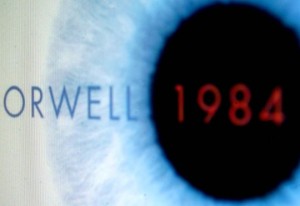
New Big Brother facial recognition system scans 36 million faces per second
A new system has emerged to process surveillance footage for facial recognition, and it makes much of the previous technology seem like it belongs in the Stone Age, further empowering the Big Brother surveillance state.
This is just another front in the rapidly growing surveillance industry which preys upon the fear and paranoia of the American people which has been instilled by the government through the Department of Homeland Security and their allied entities.

Perhaps the only system that can compete with this blazing fast technology is the facial recognition systems being developed for military drones, which incorporate three-dimensional models of the target’s face.
This method allows for even less of the target’s face to be visible while still being able to positively identify them.
The novel system developed by Hitachi Kokusai Electric of Japan is able to process video footage faster and more flexibly any previous technology could allow, thus enabling an even faster response to positive identification.
The system was displayed at the Security Show Expo in Japan and it is capable of processing a wide range of information including both still images and video footage.
It is capable of recognizing faces in real-time, or at least as close to real-time as possible, as it is able to compare a target’s face to a stunning 36 million different faces every second.
That’s right, in less than ten seconds it could compare your face to every single person in the United States.
Faces matched by the system can then be displayed as thumbnails, allowing the individual(s) analyzing the footage to tell exactly what the person was doing over time.
The raw speed of this new system is achieved through processing images for facial recognition as it is being recorded from the camera, whereas older systems would process the images after the fact.
Obviously this was seen as a problem because it caused significant delays, although I must question how accurate this new technology is, especially since facial recognition software is notoriously unreliable.
Unlike the aforementioned system which utilizes three-dimensional models for more accurate recognition in a wide variety of circumstances, this system is only capable of working with faces turned less than 30 degrees from the camera either vertically or horizontally.
Furthermore, faces must be at a minimum 40 pixels by 40 pixels (width by height) in order for the system to work as it should.
This is obviously less impressive than the military’s system which requires just slivers of an image, although this system might be faster in processing faces.
However, this system, which Hitachi Kokusai Electric is planning to begin selling in the next fiscal year, is apparently going to be commercially available, which is likely not the case with the drone-based surveillance system relying on the three-dimensional face model.
The widespread acceptance of this trend, and the almost nonexistent resistance to it, is somewhat disturbing to me.
Maybe the American people, and the people of the world for that matter, will not start to care until facial recognition cameras are on every corner, in every home, business, and other public place.
Hopefully that is not the case but the seeming lack of opposition in the United States is not promising.
